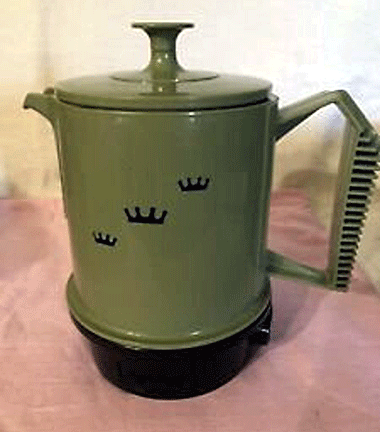 For
those born between 1940 and 1950, as teenagers the era was one of
rocking or rolling or both. And as the old saying goes, what goes
around, comes around. So the retro "teen" 1950s and 1960s and the
grooving ‘70s are in—currently known as retro.
For
those born between 1940 and 1950, as teenagers the era was one of
rocking or rolling or both. And as the old saying goes, what goes
around, comes around. So the retro "teen" 1950s and 1960s and the
grooving ‘70s are in—currently known as retro.
Back then television was king. Dick Clark’s American Bandstand got
Philadelphia rolling after school and I Love Lucy kept the family
laughing at night. The transition from an innocent era to the
psychedelic "turn on, tune in and drop out" world of the 1960s and 1970s
reminds many people of the radical changes culturally, socially and
politically that rocked American society.
The 1950s were fairly conservative, although change was definitely in
the air. Velcro, Tang, transistor radios, frozen pizza, coonskin hats,
3-D movies, chlorophyll, the hula-hoop and Frisbees were new on the
scene. Bill Haley, rock 'n' roll and Elvis were in. The jukebox, a must
at the ice cream parlor, would play three songs for a quarter. Still
through it all our fathers knew best, the whole family ate together and
mothers . were expected to be homemakers and dutiful wives. Those women
who did have jobs were traditionally secretaries, nurses or teachers,
specific professions considered permissible by society.
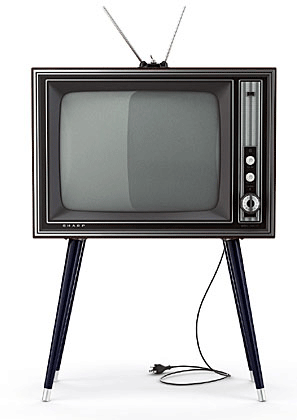 TV
was new-sprung and nifty in the 1950s, a fresh-form of family
entertainment. Instead of "watching'' the radio as households did in the
1940s, mom, dad, and the kids were now enchanted with the fuzzy images
in a box headed by rabbit ear antenna. By 1957 there were 47 million TV
sets in the United States; well over four times the number seven years
prior. Variety shows like Milton Berle, Show of Shows, Hit Parade,
Arthur Godfrey, Red Skelton, Perry Como and Ed Sullivan were big hits.
While families laughed together along with Ozzie and Harriet, Donna
Reed, Lucy, Jack Benny, George Burns and Gracie Allen, stay-at-home moms
planned their afternoon ironing schedules around the soaps. By the late
1950s, game shows and westerns took hold and, there evolved more than
one channel to choose from. Families began to watch T.V. incessantly.
They even ate in front of the T.V., thus necessitating the invention of
the T.V. tray and comfortable casual furniture without frills.
TV
was new-sprung and nifty in the 1950s, a fresh-form of family
entertainment. Instead of "watching'' the radio as households did in the
1940s, mom, dad, and the kids were now enchanted with the fuzzy images
in a box headed by rabbit ear antenna. By 1957 there were 47 million TV
sets in the United States; well over four times the number seven years
prior. Variety shows like Milton Berle, Show of Shows, Hit Parade,
Arthur Godfrey, Red Skelton, Perry Como and Ed Sullivan were big hits.
While families laughed together along with Ozzie and Harriet, Donna
Reed, Lucy, Jack Benny, George Burns and Gracie Allen, stay-at-home moms
planned their afternoon ironing schedules around the soaps. By the late
1950s, game shows and westerns took hold and, there evolved more than
one channel to choose from. Families began to watch T.V. incessantly.
They even ate in front of the T.V., thus necessitating the invention of
the T.V. tray and comfortable casual furniture without frills.
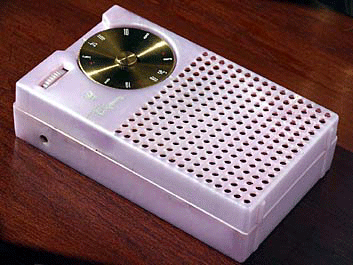 The
1950s were still pretty conventional. But changes were about to take
place. Innovations such as Velcro, Tang, frozen foods, transistor
radios, Frisbees and the hula-hoop began to appear. Bill Haley and the
Comets rocked around the clock while jukeboxes filled every burger joint
and ice cream parlor with the sounds of the young.
The
1950s were still pretty conventional. But changes were about to take
place. Innovations such as Velcro, Tang, frozen foods, transistor
radios, Frisbees and the hula-hoop began to appear. Bill Haley and the
Comets rocked around the clock while jukeboxes filled every burger joint
and ice cream parlor with the sounds of the young.
Conformity dictated fashion. Girls wore cinch belts, Capezios, cardigan
sweaters buttoned backwards, horn-rimmed glasses and chiffon formals.
Boys sported button-down shirts, white bucks or loafers, and the
athletes, a letter sweater. And don’t forget those pink phones,
flamingos, and poodle skirts.
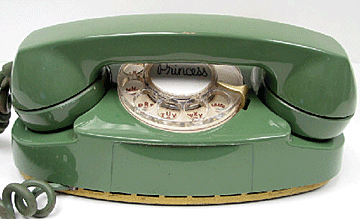 Things
started to get out of whack in the 1960s. Today, people recall that era
through images of drugs, free love, Woodstock and Vietnam protests. But
while all this was going on rock ‘n roll was climbing the charts. While
Chubby Checker's Twist kept people’s waistlines in check, it was the
Beatles who lit their fires. The space race captured everyone’s
attention as astronauts walked on the Moon. Barbie and Ken were in their
glory. Color TV, Sesame Street, lava lamps, electric knives, Petula
Clark, James Bond, Twiggy, and of course, those prevalent colors,
avocado and gold, exemplified decor in most homes. Hippiedom, the
Corvair and the VW Beetle were components of the era as well. Ah, the
age most now refer to as retro.
Things
started to get out of whack in the 1960s. Today, people recall that era
through images of drugs, free love, Woodstock and Vietnam protests. But
while all this was going on rock ‘n roll was climbing the charts. While
Chubby Checker's Twist kept people’s waistlines in check, it was the
Beatles who lit their fires. The space race captured everyone’s
attention as astronauts walked on the Moon. Barbie and Ken were in their
glory. Color TV, Sesame Street, lava lamps, electric knives, Petula
Clark, James Bond, Twiggy, and of course, those prevalent colors,
avocado and gold, exemplified decor in most homes. Hippiedom, the
Corvair and the VW Beetle were components of the era as well. Ah, the
age most now refer to as retro.
What exactly does retro mean?
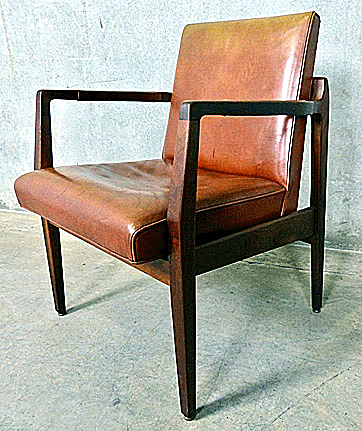 The
word "retro" derives from the Latin prefix retro, meaning "backwards" or
"in past times" – particularly as seen in the words retrograde, implying
a movement toward the past instead of a progress toward the future, and
retrospective, referring to a nostalgic (or critical) eye toward the
past.
The
word "retro" derives from the Latin prefix retro, meaning "backwards" or
"in past times" – particularly as seen in the words retrograde, implying
a movement toward the past instead of a progress toward the future, and
retrospective, referring to a nostalgic (or critical) eye toward the
past.
According to the Oxford University Press Dictionary, it means,”
imitative of a style from the recent past.” Retro is a culturally
outdated or aged style, trend, mode, or fashion, most likely from the
1940s through the 1960s. Whether it’s furniture, accessories, clothing,
and collectibles, especially those related to the Golden Age of
Hollywood, retro is in.
Furniture and accessories, especially the ubiquitous pole lamp, featured
streamlined styling in avocado and gold. By 1957 there were 47 million
T.V. sets in America’s homes, four times the number of seven years
before.
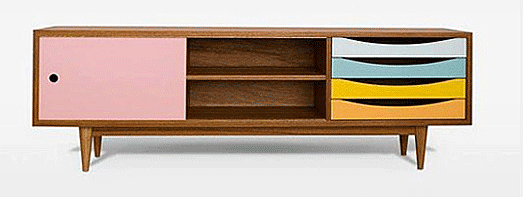
Ironically, even with all the great collectibles from those three crazy
decades, teens and 20- and 30-somethings are seeking out objects and
furniture that’s new but reminiscent of times past.
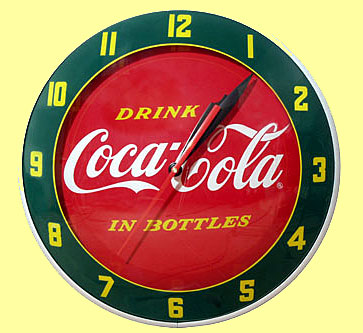 As
with all past eras, people tend to focus on certain objects from them
and not necessarily look at the whole picture. Today’s TV depicts the
1950s and 1960s as a rollicking good time. It wasn’t. Generally, people
tend to forget the curfews, no sales on Sundays, dress and suit-and-tie
world that dominated people’s lives.
As
with all past eras, people tend to focus on certain objects from them
and not necessarily look at the whole picture. Today’s TV depicts the
1950s and 1960s as a rollicking good time. It wasn’t. Generally, people
tend to forget the curfews, no sales on Sundays, dress and suit-and-tie
world that dominated people’s lives.
A whole new generation of people are being exposed to Marilyn Monroe and
James Dean, while Elvis and the Beatles seem to be as hot now as they
were when they debuted. The likenesses of these superstars can be found
on new clothing, handbags, posters and playing cards, just to name a few
items.
One of the problems with items related to movie stars or comic
characters is generally no one cares about them once the generations who
loved them grows old. For example, not many 20-somethings or even
30-somethings are going to know what a Schmoo is, hence they are
unlikely to be attracted to memorabilia featuring the Schmoo’s likeness.
Today, the concept of retro lends itself to interior design, furniture,
accessories, jewelry and fashions. Unlike vintage which includes items
created in the last 40 or 50 years, retro relates more to a specific
time period from the 1930s to the 1970s. Today, younger people look to
it as a source of chic interior design.
What does it mean to go retro?
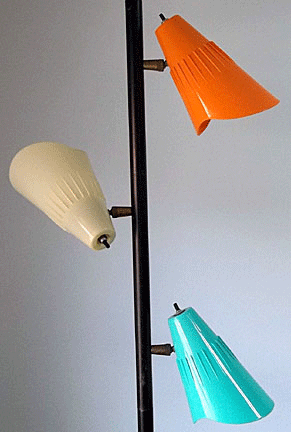 While
those in their twenties may seek out new items made to look like older
ones, those in the know and a bit older are looking to the real thing.
While
those in their twenties may seek out new items made to look like older
ones, those in the know and a bit older are looking to the real thing.
For some, going retro means getting rid of a hodgepodge of furniture and
substituting it with the sleek style of Mid-Century Modern. Chrome and
formica tables for the kitchen, sleek leather-covered chairs, glass
tables, and pole lamps for the living room.
For others, going retro means collecting pop art doodads from the 1950s
or avocado kitchen utensils. Still others may want to collect a variety
of plastic objects, some utilitarian, like Melmac dinnerware, others
just plain fun like shag rugs,
Whatever a person decides to collect, there are plenty of retro objects
out there like transistor radios, 78 rpm vinyl records, posters from
early rock groups.
< Back to Collecting Archives
Next Article >
